Emmentaler Cheese: The Swissest of the Swiss
Emmentaler (or Emmental) is the original Swiss cheese…but you don’t have to import it when there’s great traditional Emmental cheese made right here in Wisconsin.
So you’re making yourself a ham-and-cheese sandwich…or a classic Reuben. Or maybe a smooth, tangy fondue to serve with French bread. What kind of cheese are you going to reach for? If you’re like most Americans, the answer is Swiss cheese…but what you really have in mind is Emmentaler.
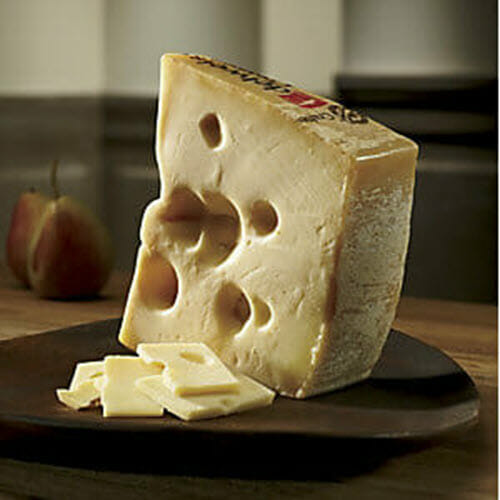
What Is Emmentaler Cheese?
Emmentaler (or Emmental cheese) is a medium-hard cheese originating in the area around Emmental, Switzerland. Either term is correct: Emmental is the name of the place, while Emmentaler describes something from there…like America vs. American. The Emmental is a valley (the word tal in German means “valley” or “dale”) in west-central Switzerland. Forming part of the canton of Bern, the region is hilly and mostly devoted to dairy farming.
Emmentaler is what we all know as Swiss cheese. In Switzerland, there is no “Swiss cheese”; instead, there are a number of Alpine cheeses—Emmentaler, Gruyère, Fontina, and others—from different regions.
Switzerland is multi-ethnic, and so are its cheeses. Gruyère comes from a predominantly French area, while Fontina is an Alpine cheese originating in Italy. But as Switzerland is predominantly German, it stands to reason that the cheese with the German name—Emmentaler—is the definitive Swiss cheese.
Emmentaler Pronunciation
Emmentaler is pronounced as “em-en-TAH-luhr.” You may also see it spelled Emmenthal, but it’s still pronounced the same: with a t rather than a th. Here is a breakdown of the pronunciation:
- “em” sounds like the letter “M.”
- “en” sounds like the word “en” in English.
- “TAH” is pronounced with a short “a” sound as in “cat” or “bat.”
- “luhr” rhymes with the word “blur” but with an “l” sound at the beginning.
Putting it all together, it is pronounced as “em-en-TAH-luhr.”
What does Emmentaler taste like?
Its flavor is nutty and somewhat buttery, with a slightly fruity, acidic tone. Emmentaler is pale yellow and riddled with distinctive holes, or “eyes.” It has a hard, thin rind covered by paper with the producer’s name on it. The aroma is sweet, with notes described by some as similar to fresh-cut hay.
As is the case with many cheeses, Emmentaler gets its unique qualities from bacterial cultures. Without getting too technical, there are three of them. In a late stage of cheese production, one type of bacteria consumes the lactic acid produced by the other two and releases acetate, propionic acid, and carbon dioxide gas. The carbon dioxide forms the bubbles that become the “eyes,” while the acetate and propionic acid give the cheese its characteristic nutty and sweet flavor.
How is Emmentaler cheese made?
Traditionally made from unpasteurized milk in huge copper kettles and formed into wheels weighing up to 200 pounds, Emmentaler is truly a giant among cheeses. Its distinctive holes are formed during the aging period, as it gives off gases that form air pockets within the cheese. These holes, called “eyes,” grow larger during the aging process. In Switzerland, traditional Emmental cheese must be aged a minimum of four months. This is known as “classic” Emmentaler. “Reserve” Emmentaler is aged for eight months, and Premier cru for 14 months. The denomination “Emmentaler Switzerland” is protected; however, the term “Emmentaler” is not. Accordingly, one can find Emmentaler cheese from France, Bavaria, Finland…and, of course, the United States.
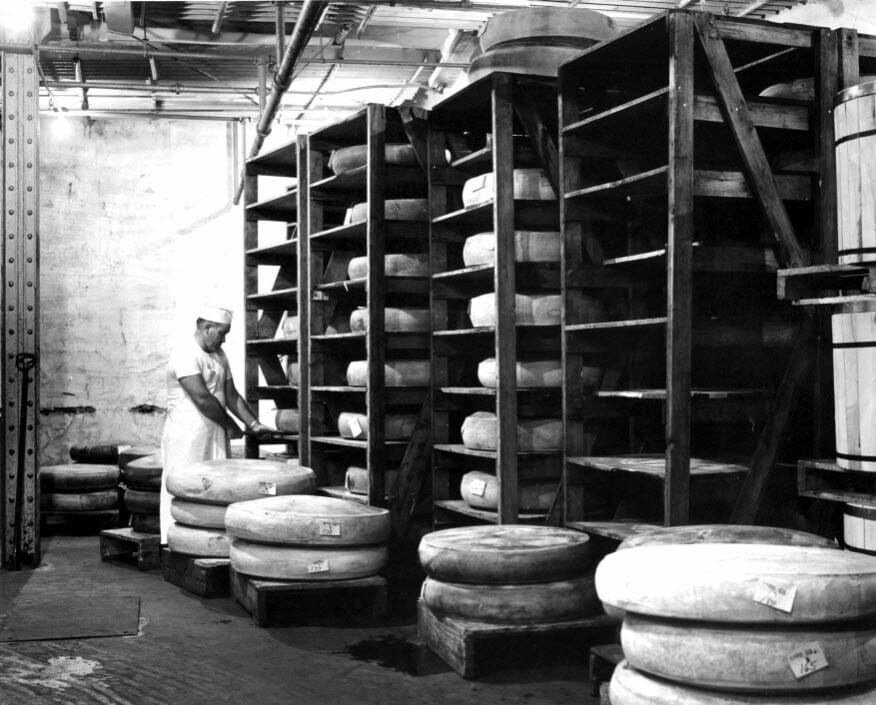
Emmental with an American Accent
Swiss cheese came to America in the mid-1800s when Swiss immigrants brought the traditional Emmentaler cheese recipe with them and started small cheese operations, first in the state of New York and eventually westward to Green County, Wisconsin.
The Swiss cheesemakers either brought the traditional copper kettles with them or had them made here, and the art lived on. However, the process of making the huge 200-pound wheels was labor-intensive, and the aging process took valuable time and space. Over the years, some cheesemakers tweaked the formula, sometimes using whole instead of part-skim milk or forming the cheese into smaller wheels that would require less ripening time and could be sold earlier. This is how Wisconsin’s mild, buttery Baby Swiss cheese was born.
Other Swiss cheese manufacturers took the basic recipe and adapted it to a much larger scale, and today one can find American “Swiss cheese” virtually anywhere. It’s a perfectly good, natural product, even if it lacks the fresh, young character of Baby Swiss or the aged dignity of Swiss Emmental cheese. But good Emmental doesn’t have to come from Switzerland…or even Europe.
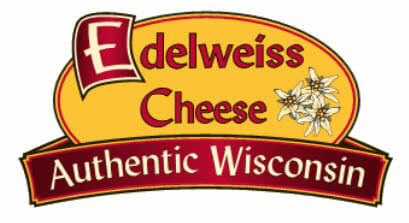
Wisconsin’s Traditional Emmentaler Cheese
There is one artisan who still makes Emmentaler cheese the way it’s done in Switzerland…and it stands to reason he would be located in “America’s Little Switzerland,” aka Green County, Wisconsin. Master Cheesemaker Bruce Workman, of Edelweiss Creamery in Monticello, preserves the ancestral Swiss cheesemaking heritage, skillfully crafting 100% authentic Emmentaler cheese in an old-fashioned copper kettle direct from Switzerland. He uses raw milk (heat-treated for added safety) sourced from grass-fed cows on only three farms, and the cheese is formed into 180-pound wheels just like traditional Swiss Emmentaler. In fact, Edelweiss Creamery is the only facility in the country with the capability to produce these amazing wheels of cheese.
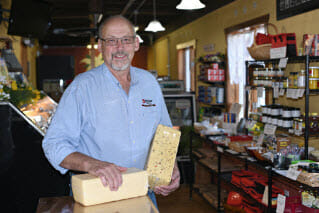
Workman describes the taste of his Emmentaler as “creamy, sweet, and nutty with a very pronounced flavor”…and many experts are more than impressed with his work. Edelweiss Creamery’s Emmentaler Cheese has not only won First Place awards from American Cheese Society; it was deemed the best in a blind taste test conducted by Cook’s Illustrated, operators of “America’s Test Kitchen.”
Emmentaler Cheese Recipes
Because “Swiss cheese” is actually Emmentaler, you can use Emmentaler in any recipe calling for Swiss…generally with better results. Of course, since traditional Emmentaler cheese comes with a premium price tag, you would be well advised to use it in a recipe that best showcases its subtle nuances. Try it in one of these excellent Emmentaler cheese recipes from the Wisconsin Milk Marketing Board.
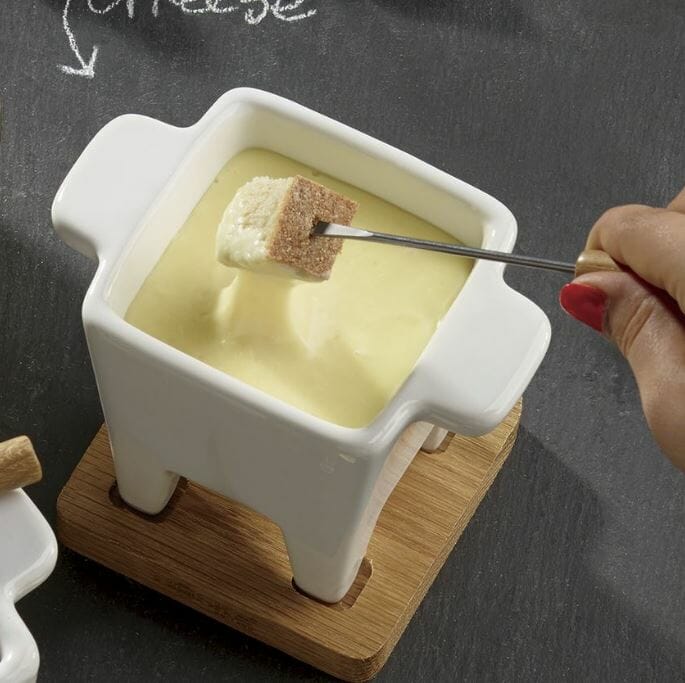
Emmentaler Cheese Fondue Recipe
Emmentaler is traditionally paired with Gruyère in a Swiss fondue. For true convenience, you can even find a pre-shredded Swiss fondue cheese blend of Emmentaler and Gruyère right from Switzerland.
Ingredients:
- 1 pound (450g) Emmentaler cheese, grated
- 1 clove garlic, halved
- 1 1/2 cups (350ml) dry white wine
- 1 tablespoon lemon juice
- 1 tablespoon cornstarch (cornflour)
- 2 tablespoons kirsch (cherry brandy) (optional)
- Freshly ground black pepper, to taste
- Nutmeg, to taste
- Baguette or crusty bread, cut into bite-sized cubes
Instructions:
- Start by rubbing the inside of your fondue pot with the halved garlic clove, allowing the flavor to infuse into the pot. Then discard the garlic.
- In a small bowl, mix the cornstarch with a little bit of the white wine to form a smooth paste. This will help thicken the fondue.
- Pour the remaining white wine and lemon juice into the fondue pot and heat it over low to medium heat until it starts to simmer. Be careful not to boil the mixture.
- Gradually add the grated Emmentaler cheese to the pot, stirring continuously in a figure-eight motion until the cheese is completely melted and smooth. This process should take about 5-10 minutes.
- Once the cheese has melted, add the cornstarch mixture to the pot and continue stirring until the fondue thickens slightly. If desired, add the kirsch to the pot and stir it in.
- Season the fondue with freshly ground black pepper and a pinch of nutmeg, adjusting the flavors to your liking.
- Transfer the fondue pot to a fondue burner or a low heat source to keep it warm while serving. Stir the fondue occasionally to prevent it from sticking or forming a skin.
- Serve the Emmentaler cheese fondue with bite-sized pieces of bread or baguette for dipping. Use fondue forks or wooden skewers to dip the bread into the fondue and enjoy!
Note: Feel free to add other ingredients to your fondue, such as chopped herbs, diced tomatoes, or cooked vegetables, to customize the flavor to your preference.
Enjoy your delicious Emmentaler cheese fondue!
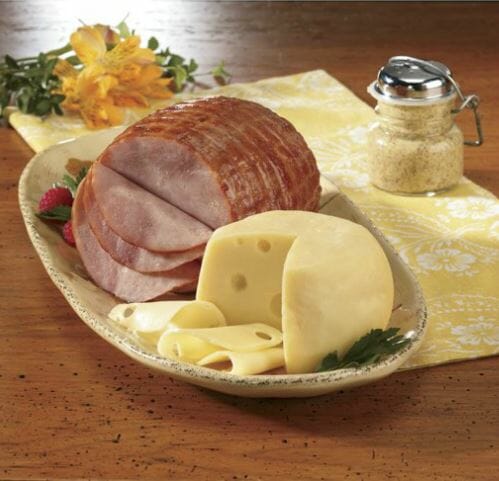
Emmentaler Cheese Pairings
Being an Alpine cheese, Emmentaler goes well with other foods from that region…and others that either complement or contrast with its sweet, nutty character. Be sure to enjoy Emmentaler at room temperature. Beyond that, here are some pairing suggestions:
Wine: Whites: riesling, grüner veltliner, Jura Blanc, ice wines. Reds: merlot, pinot noir, zinfandel, syrah/shiraz
Beer: Bock, lager, pale ale, stout, weiss
Meats: Ham, beef, poultry, pork
Fruits: Apples, pears, dried fruits

Where to Buy Emmentaler Cheese?
Emmentaler cheese can be found in various grocery stores, specialty cheese shops, and online retailers. Here are a few options for purchasing Emmentaler cheese:
- Local grocery stores: Some well-stocked supermarkets carry Emmentaler cheese in their cheese section. Look for it in the specialty cheese or international foods aisle.
- Specialty cheese shops: Local cheese shops or gourmet food stores often have a wide selection of cheeses, including Emmentaler. These stores may offer a higher quality and a more extensive variety of Emmentaler cheese.
- Online retailers: Numerous online retailers specialize in selling cheeses, and Emmentaler is no exception. Websites such as The Wisconsin Cheeseman and The Swiss Colony often have a selection of Emmentaler cheese available for purchase.

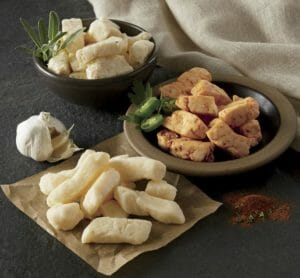
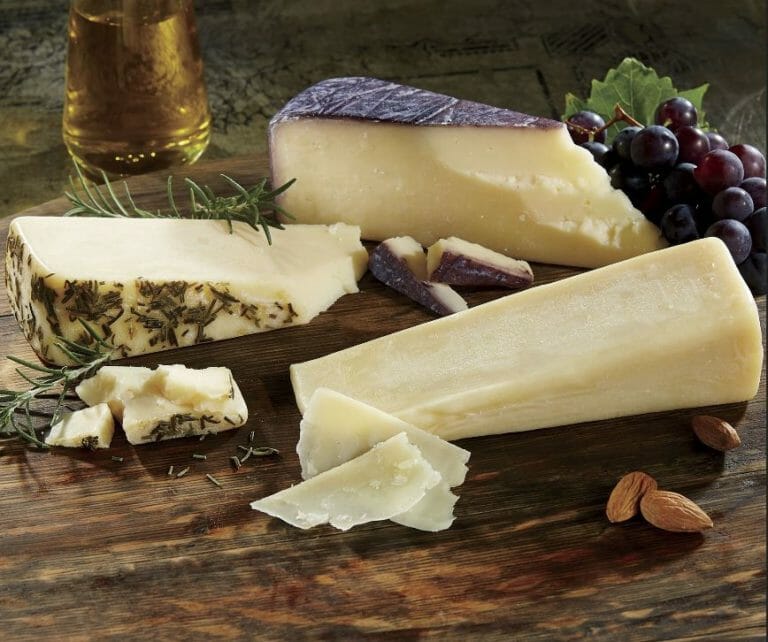
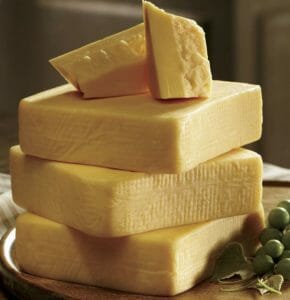
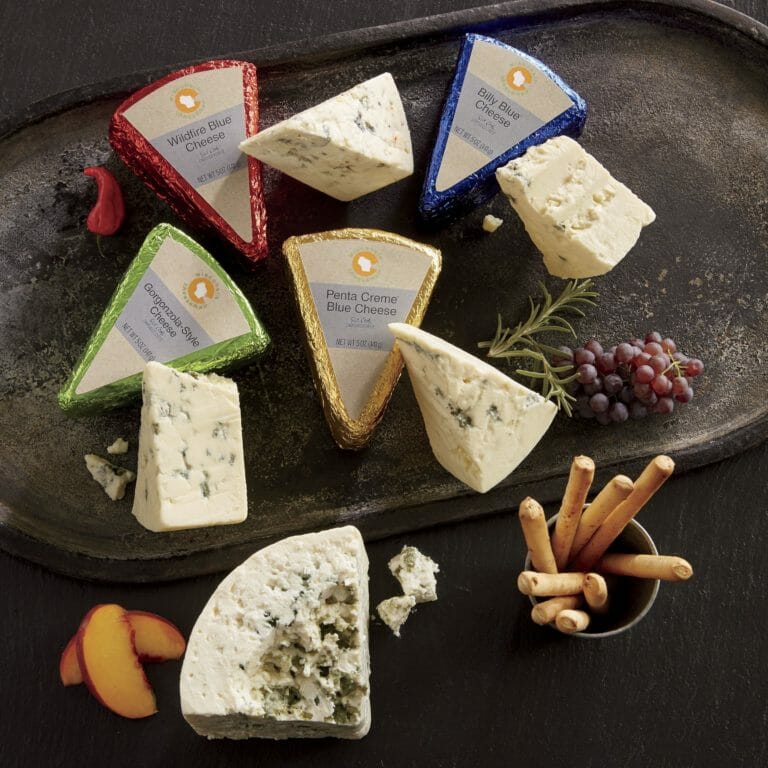
Comments (10)
Alpine Cheeses - Mountain Cheese - Alp Blossom Cheese | The Nibble Webzine Of Food Adventures - The Nibble Webzine Of Food Adventures
[…] Emmental is the name of the place, while Emmentaler describes something from there. Here’s more about it (photo © Wisconsin […]
Henry Troyer
“This is how Wisconsin’s mild, buttery Baby Swiss cheese was born.” Baby Swiss cheese was NOT born in Wisconsin, as implied here. It was developed near Charm, Ohio, by Mr. Guggisburg, soon after he and his family immigrated from Switzerland in the late 1940s. I grew up about 10 miles from there. I never met Mr. Guggisburg, but I used to know his wife and son.
Spilling our secret: WHALEcome to Whale of a Time! – Kudzu World
[…] was a perfect nickname for this fun game. You can learn more about the history of Emmentaler cheese here, from The Wisconsin […]
The Best Cheese with berries Pairings for Your Appetizer ~ CHEF KNOWS
[…] hard cheeses (ex. Emmenthaler or […]
PRODUCT: Alp Blossom Cheese From Austria & Other Alpine Cheeses - Diet Daily Tips
[…] Emmental is the name of the place, while Emmentaler describes something from there. Here’s more about it (photo © Wisconsin […]
David Crolius
How long will a wedge that is unopened keep in the refrigerator? Can it be frozen, if so how long will it keep if frozen?
Jeff
You can keep unopened Emmentaler for 1 to 2 months in the refrigerator. It can be frozen for 6 to 8 months, but it will not taste the same after it’s been frozen. We recommend you enjoy it when it’s fresh and flavorful!
Who Makes the BEST Pastrami Sandwich in Portland? - SkyBlue Portland
[…] The Cheese Course: Emmentaler Cheese: The Swissest of the Swiss | The Wisconsin Cheeseman […]
Kimberly Collins
Where. Can I buy this cheese in Wisconsin. I am from Wausau
severson
We don’t currently have any, but Edelweiss Cheese in Monticello makes it and Emmi Roth imports it. You should be able to find it at any good cheese shop or at Woodman’s or any supermarket with a good cheese section. Thanks for writing!